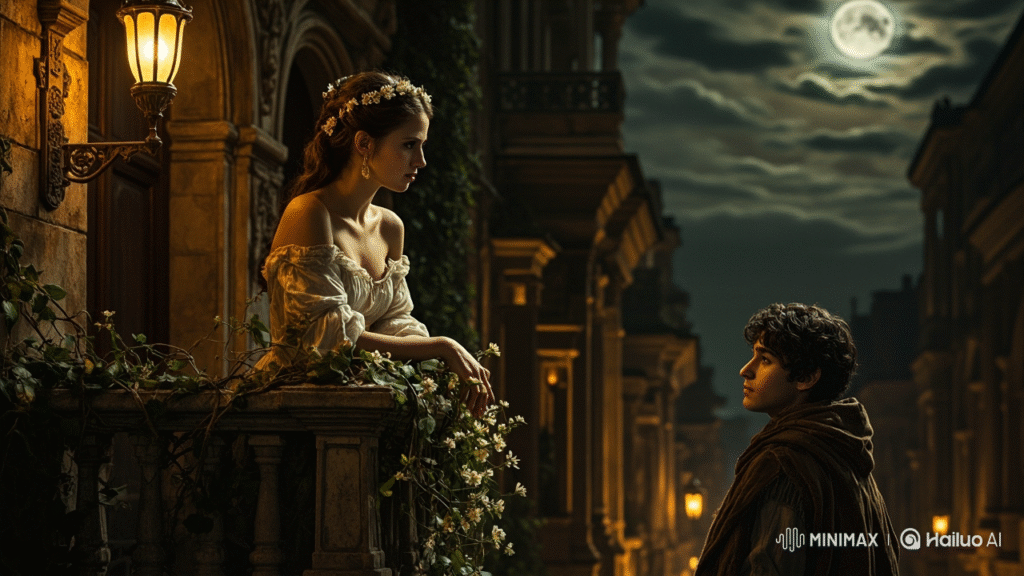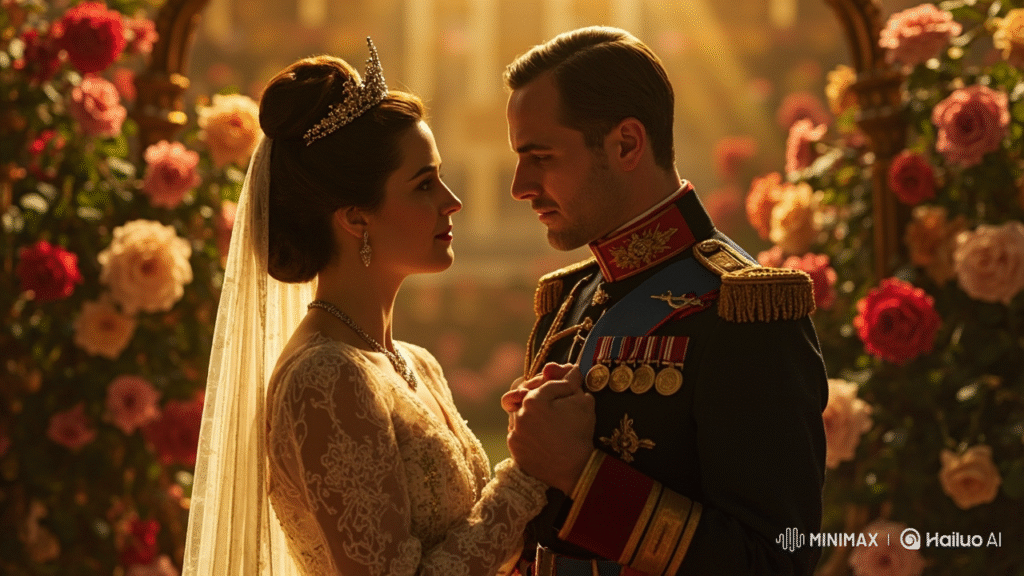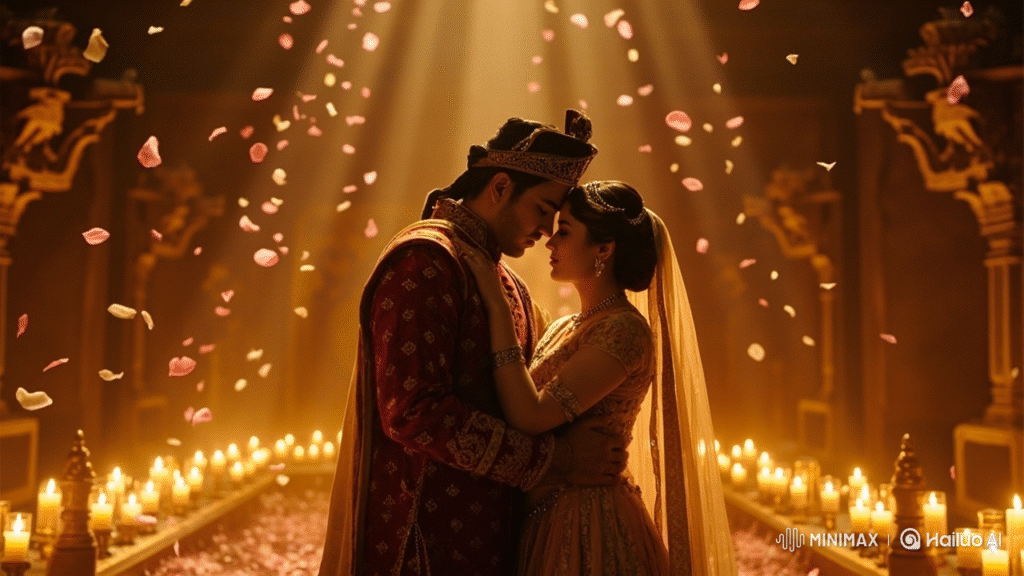Fall in love with every word through Love Stories — a heart-touching collection of romantic tales, poetic scenes, and modern short stories that explore passion, heartbreak, and timeless devotion. From first crushes to everlasting bonds, these stories remind readers that true love lives in life’s smallest moments. Explore more emotional reads like 10 Love Stories That Touch the Heart and Stories About Friendship to experience the full beauty of human connection. #LoveStories #RomanticReads #Inspirednap
Love Stories in Everyday Life
Inspiring love stories are not always about grand gestures. Sometimes, they are about:
- Parents sacrificing for their children.
- Friends who stand by each other no matter what.
- Strangers who show love and compassion in small but life-changing ways.
Lessons We Can Learn from Inspiring Love Stories
- Love is Selfless – It is about giving, not just receiving.
- Love is Brave – It pushes us to overcome fear and face challenges.
- Love is Healing – It gives hope when we feel lost or broken.
- Love is Eternal – Even when people leave this world, their love remains in memories, stories, and legacies.
Here Are Some Real and Famous Stories of Love
Every culture has its own way of celebrating romance:
- Japanese love stories often weave together themes of loyalty, destiny, and sacrifice, reflecting deep cultural values.
- Western romances may focus on passion and individuality.
- Universal tales remind us that, no matter the country, love is the common thread connecting us all.
Romeo and Juliet The Power of Young Love
When people think of love stories that inspire, Romeo and Juliet is often the first that comes to mind. Written by William Shakespeare in the late 16th century, it remains one of the most famous plays in history not only because of its tragic ending but because it captures the intensity, purity, and beauty of young love.

This tale is more than a romantic tragedy. It is a story of courage, devotion, sacrifice, and the way love can rise above divisions, even when the world seems determined to keep two people apart.
The Setting: Verona, a City Divided
The story begins in Verona, Italy, a city torn apart by the bitter rivalry between two powerful families the Montagues and the Capulets. Their feud had lasted for generations, poisoning the lives of their children and making peace nearly impossible.
In such a hostile environment, love should not have been able to grow. Yet, sometimes, it is in the darkest soil that the most beautiful flowers bloom.
The First Meeting: Love at First Sight
Romeo Montague, a young man full of passion and dreams, attends a grand feast at the Capulet’s home. He does not belong there, but fate guides him into the glittering ballroom where music plays and laughter echoes.
Among the crowd, his eyes fall upon Juliet Capulet, a girl of just fourteen, radiant in her innocence and grace. In that single moment, the noise fades away, the feud disappears, and nothing matters except the connection between their hearts.
They exchange words, soft and poetic, as though their souls recognize each other instantly. Romeo, overwhelmed, calls Juliet a “holy shrine” and kisses her hand. Juliet, equally moved, responds with the same tenderness.
It is love at first sight powerful, unstoppable, and pure.
The Balcony Scene: A Symbol of Devotion
One of the most famous scenes in all of literature takes place that very night. Unable to stay away, Romeo sneaks into the Capulet garden and hears Juliet speaking to the stars. She wonders aloud why Romeo must be a Montague, the son of her family’s enemy.
“O Romeo, Romeo, wherefore art thou Romeo?”
These words capture the essence of their struggle: they are in love, but their names, tied to ancient hatred, stand between them.
Romeo steps out from the shadows, and the two declare their love in whispers, promising that no feud will stop them. The balcony becomes more than a meeting place it becomes a symbol of youthful courage, where love dares to defy the world.
Secret Marriage: A Hope for Unity
Their love grows so strong that they cannot wait. With the help of Friar Lawrence, who hopes their union might bring peace to Verona, Romeo and Juliet marry in secret.
For them, marriage is not just a bond it is a rebellion against hatred. It is a vow that love can conquer division. At this point in the story, hope is alive. The audience dares to believe that perhaps love will heal the ancient wounds of the two families.
Tragedy Strikes: A Chain of Misfortune
But love stories are not always simple. The same day Romeo and Juliet are joined in love, tragedy takes over.
Juliet’s cousin, Tybalt, filled with rage at Romeo for daring to attend the Capulet feast, challenges him to a duel. Romeo, now secretly Tybalt’s kinsman through marriage, refuses. But fate intervenes when Romeo’s friend Mercutio steps in. The duel ends with Mercutio’s death, and Romeo, burning with grief, kills Tybalt in revenge.
This act changes everything. Romeo is banished from Verona, and Juliet is left broken-hearted.
The Final Sacrifice: Love Beyond Death
Determined to be with her beloved, Juliet turns to Friar Lawrence, who devises a dangerous plan. She will drink a potion that makes her appear dead, allowing her to escape with Romeo once he returns.
But fate, once again, plays cruelly. The message does not reach Romeo. Believing Juliet truly dead, he drinks poison at her side, choosing death over a life without her.
Moments later, Juliet awakens. Finding Romeo lifeless, she takes his dagger and joins him in eternal rest.
The Aftermath: Lessons from Their Love
The deaths of Romeo and Juliet shock Verona. The Montagues and Capulets, struck by grief and guilt, finally end their feud. The young lovers could not live in peace, but in death, they achieved what no one else could unity.
The play closes with the Prince of Verona declaring:
“For never was a story of more woe, than this of Juliet and her Romeo.”
Why This Love Story Still Inspires
Centuries later, Romeo and Juliet continues to move hearts across the world. Here’s why:
- The Purity of Young Love – Their love was immediate, fearless, and true, untouched by selfish motives.
- The Courage to Defy the World – Despite their families’ hatred, they chose each other.
- The Power of Sacrifice – They gave up everything, even their lives, to remain united.
- The Hope of Change – Though tragic, their story brought peace and reminded us that love is stronger than hate.
Ending
Romeo and Juliet is more than just a tragic tale it is a timeless reminder of the power of love. It teaches us that love can challenge barriers, inspire courage, and transform even the coldest hearts. Though their story ends in sorrow, it also leaves behind a legacy of hope: that someday, love will win over hatred, and unity will rise from division.
Their tale continues to inspire plays, films, novels, and even modern love stories. And it will always remind us that true love though fragile is the most powerful force in the world.
Laila and Majnun The Legend of Eternal Love
Some love stories are written in the stars destined to echo across centuries, carrying lessons of devotion, sacrifice, and eternal connection. Among these tales, none shines brighter in Eastern literature than the story of Laila and Majnun, often called the “Eastern Romeo and Juliet.”

Their love, immortalized in poetry and folklore, is not merely about two people longing for each other. It is about a love so pure, so consuming, that it transcends worldly boundaries and becomes a symbol of spiritual union.
The Beginning: Two Souls Meet
The story begins in the Arabian desert, in a time when traditions, honor, and family pride ruled above all else.
Laila, the daughter of a wealthy Bedouin family, was known for her beauty, kindness, and intelligence. Her laughter was said to brighten the darkest night, and her presence was compared to the moon itself.
Majnun, whose real name was Qays ibn al-Mulawwah, was a poet’s son sensitive, deeply emotional, and filled with an almost mystical appreciation for love. From the moment he saw Laila at school, his heart was captivated.
They exchanged glances, shared innocent conversations, and soon, their souls recognized one another. For Qays, Laila was not just a girl she was destiny, his reason for living.
A Love Beyond Control
Qays began writing verses for Laila, pouring his soul into poetry that carried her name. Soon, people began calling him Majnun, meaning “possessed” or “madman,” because of the way love consumed him.
Majnun wandered the deserts, whispering her name to the winds, singing her beauty to the stars. His poems became legendary, spreading from tribe to tribe. But while his heart soared, their world was not so kind.
The Barrier of Family and Society
Laila’s parents disapproved of her love for Majnun. They feared the scandal of uniting their daughter with a man who was now known as “mad with love.” In their eyes, he was unfit too obsessed, too lost in his passion.
Despite Laila’s pleas, her family forced her into marriage with another man, a wealthy and respectable suitor.
For Majnun, this was the breaking of his soul. For Laila, it was the breaking of her heart. Though her body belonged to another, her spirit remained tied forever to Majnun.
Majnun in the Desert: Love Turns to Devotion
After losing her, Majnun retreated from society entirely. He wandered the wilderness, living among animals, composing poetry for Laila on stones and sand, and refusing all comforts of human life.
He became a symbol of sacrifice choosing love over wealth, devotion over ambition, poetry over politics. People whispered that he had lost his mind, but those who listened to his verses knew he had found something greater: a love that reached beyond the material world.
His words were not just about Laila anymore. They became prayers, cries to God, and symbols of a love so deep it touched the divine.
Laila’s Silent Struggle
Though married, Laila never forgot Majnun. She spent her days quietly, trapped in a golden cage, but her nights were filled with tears and whispered prayers for the man she truly loved.
Her health began to fade under the weight of sorrow. She longed to see Majnun, if only once more, but fate was cruel. The chains of family honor and societal expectation held her back.
The Tragic Ending: Eternal Union
Years passed. Laila’s body grew weaker, and at last, she died, her heart still calling for Majnun.
When Majnun heard the news, he rushed to her grave and fell upon it, weeping, singing her name, and pouring his soul into the earth that held her. In his grief, he refused to leave her side. Days later, he was found lifeless at her tomb his body finally at peace, his soul united with Laila’s in eternity.
Their love, denied in life, was fulfilled in death.
Why Laila and Majnun Still Inspire Us
The story of Laila and Majnun lives on because it speaks to something beyond ordinary love. It teaches us that:
- True Love is Selfless – Majnun asked for nothing but the right to love.
- Love Requires Courage – Both Laila and Majnun defied their families’ expectations.
- Love Transcends the Physical World – Even separated by marriage and death, their souls remained united.
- Sacrifice is the Purest Expression of Love – Majnun gave up society, wealth, and even his sanity to stay faithful to Laila.
Finishing
The legend of Laila and Majnun is more than just a story it is a spiritual journey, a timeless reminder that love is not bound by rules, status, or even life itself. It tells us that true love is not always about possession, but about devotion, sacrifice, and the eternal bond of two souls.
Their story continues to be sung in poems, celebrated in art, and remembered as one of the most powerful testaments to the nature of love. Just like Romeo and Juliet, Laila and Majnun remind us that real love may not always bring a happy ending, but it always leaves behind a legacy that inspires the world.
Heer and Ranjha Love Against All Odds
Every culture has its timeless love legends tales of passion that live far beyond the lives of their lovers. In South Asia, one such story stands unmatched: the tragic yet immortal love of Heer and Ranjha. Their tale, originating from the heart of Punjab, is not just about two people in love, but about defying traditions, family honor, and the harshness of fate.

It is a story of beauty and poetry, filled with longing glances, stolen moments, heartbreak, and sacrifice. To this day, songs, poems, and folk tales celebrate their undying love.
The Meeting: When Two Worlds Collide
Ranjha, whose full name was Deedo Ranjha, came from a wealthy family in Takht Hazara. He was handsome, tall, and known for playing the flute so beautifully that even the birds and rivers seemed to pause to listen. However, after disputes with his brothers over land, Ranjha left his home to wander the world in search of peace and purpose.
His journey brought him to the village of Jhang, where fate introduced him to Heer, the daughter of a powerful landlord. Heer was no ordinary girl she was renowned for her beauty, grace, and fiery spirit. Men from faraway lands dreamed of marrying her, but Heer’s heart belonged to no one.
When Ranjha’s flute first reached Heer’s ears, she was captivated. Drawn to him, she sought him out. That meeting marked the beginning of a love so powerful that it would soon challenge the entire world around them.
Love Blossoms in Secret
Ranjha began working in Heer’s father’s fields, tending cattle and playing his flute. Heer, enchanted by his music and soul, spent hours listening to him, and soon their bond deepened into love.
Their meetings were filled with laughter, poetry, and stolen glances under the shade of trees. They promised each other a future where love would triumph over all. For Heer, Ranjha was not just a man; he was her destiny, her companion, and her equal.
But in a society bound by family honor and rigid traditions, their love could not remain hidden for long.
The Wrath of Society
When Heer’s family discovered her secret meetings with Ranjha, anger and shame filled their hearts. For them, it was dishonorable for the daughter of a noble family to fall in love with a wanderer, no matter how talented or kind he was.
Heer’s parents and uncles, especially her cruel uncle Kaido, opposed the union fiercely. They saw their love as rebellion, an insult to family pride. Despite Heer’s pleas, her family arranged her marriage to another man, a decision made not out of love for her happiness but out of societal obligation.
Forced Separation
On her wedding day, Heer’s heart shattered. Though dressed as a bride, her spirit mourned like one at a funeral. She was married off against her will, while Ranjha was left wandering in despair.
Ranjha, heartbroken, renounced the comforts of worldly life. He wandered through forests and deserts, living as a faqir (a wandering ascetic), his only possessions being his flute and the memory of Heer. His songs of pain and longing echoed through the villages, making people weep for the love that had been denied.
A Glimpse of Hope
Years passed. Despite the chains of marriage, Heer’s love for Ranjha never wavered. Her prayers and devotion kept the flame alive. At last, fate seemed to turn in their favor.
Heer’s family, perhaps softened by time and the persistence of their love, finally gave permission for Heer and Ranjha to marry. The lovers rejoiced, believing that their suffering had ended and that the future they had always dreamed of was now within reach.
But destiny had one final, cruel twist.
The Tragic Ending
On the day Heer and Ranjha were to be united at last, Heer’s jealous uncle Kaido, who could not bear the thought of their happiness, devised a wicked plan. He poisoned Heer’s food.
As the wedding day approached, Heer grew weak and pale. Ranjha arrived to claim his bride, only to find her on her deathbed. Desperate, he held her in his arms, refusing to let go, but fate was merciless. Heer breathed her last, her eyes fixed on Ranjha, whispering his name.
Struck with unbearable grief, Ranjha ate the poisoned food himself, choosing to follow Heer into death rather than live without her.
They were buried side by side, their souls finally united even though their lives had been torn apart. To this day, their graves in Jhang are a symbol of eternal love, visited by lovers who pray for blessings of loyalty and devotion.
The Meaning Behind Heer and Ranjha’s Story
This tragic love story is not merely about romance it is about courage, resilience, and the fight against rigid traditions. Heer and Ranjha teach us that:
- Love is Stronger Than Social Barriers – Their bond defied wealth, status, and family honor.
- True Devotion Endures All Trials – Despite years of separation, their love never faded.
- Jealousy Destroys, Love Heals – While Kaido’s jealousy killed them, their love lives forever.
- Even Death Cannot Break True Love – In life they were denied, but in death they found eternal union.
Closure
The tale of Heer and Ranjha continues to be sung in Punjabi poetry, music, and theater. It is more than a story it is a reminder that love is not always about living happily ever after, but about loyalty, sacrifice, and the eternal bond of two hearts.
Like Romeo and Juliet and Laila and Majnun, the legend of Heer and Ranjha has become a symbol of eternal love love that defies the world, endures suffering, and finds its home in eternity.
Sohni and Mahiwal The River of Love
Among the timeless love legends of the world, few shine as brightly and as tragically as the tale of Sohni and Mahiwal. This Punjabi folktale is not just about romance it is about passion so intense that it dares to challenge society, family honor, and even the raging river itself.

Like Romeo and Juliet in the West, and Heer and Ranjha in Punjab, Sohni and Mahiwal’s love remains immortal, remembered through songs, poetry, and stories passed down through generations.
(Sohni) The Potter’s Daughter
Sohni was born into a family of potters in Gujrat, Punjab. She was not only beautiful but also skilled in painting delicate floral designs on her father’s earthenware pots and pitchers. Her art was admired across the region, and travelers often visited just to buy her work.
Her beauty became a subject of admiration far and wide. People often said that her face glowed brighter than the moonlight reflecting on the Chenab River.
The Stranger from Samarkand( Mahiwal )
Far away in Samarkand (Uzbekistan), there lived a wealthy merchant’s son named Izzat Baig. Restless and yearning for adventure, he traveled to India. On reaching Punjab, his path led him to Gujrat, where he saw Sohni for the first time.
One glance at her, as she painted flowers on a pot by the riverbank, and his heart was lost forever. He could not sleep, eat, or think of anything else. The wealthy traveler, who had the riches of the world, now desired only the love of a potter’s daughter.
Day after day, he found excuses to visit her family’s shop. Slowly, Sohni too began to notice his sincerity and kindness. What started as shy glances soon blossomed into deep affection.
Love in Secret
Their love grew in secrecy. Sohni and Izzat Baig (now called Mahiwal, meaning “the buffalo herder”) would meet by the banks of the Chenab. He left his wealth behind, choosing instead to herd buffaloes and live simply near Sohni’s village, just to be close to her.
But love stories in olden times rarely went unchallenged. Sohni’s family could not accept her union with a foreign traveler. Fearing disgrace, they forced her into a marriage with another man, a potter from her community.
Midnight Meetings
Though trapped in a loveless marriage, Sohni’s heart belonged only to Mahiwal. Every night, when the world slept, she would sneak out of her home and cross the Chenab River to meet him.
To protect herself from drowning, she used a large earthenware pot as a floating aid. Holding onto the pot, she braved the river’s waves to reach Mahiwal’s hut on the opposite bank.
There, under the moonlight, they shared moments of love short, fleeting, yet eternal. For them, those nightly meetings were worth every risk.
Jealousy and Betrayal
But not everyone rejoiced in their love. Sohni’s sister-in-law noticed her nightly disappearances. Suspicious, she followed her one night and discovered the truth. Filled with jealousy and spite, she plotted to end Sohni’s secret forever.
One night, before Sohni set out to meet Mahiwal, her sister-in-law replaced Sohni’s baked earthen pot with an unbaked clay one. From the outside, both looked the same, but the unbaked one would melt in water.
The Final Crossing
That night, as usual, Sohni slipped away from her house, eager to meet her beloved. She clutched the pot and entered the Chenab River. The moon was bright, the water rushed fiercely, and Mahiwal waited anxiously on the far shore.
Halfway across, Sohni felt the pot weakening. The cold water seeped in as the clay began to dissolve. Panic filled her heart, but she kept moving forward, desperate to reach Mahiwal.
From the other side, Mahiwal saw her struggling. He rushed into the river to save her, but the waves were merciless. The Chenab roared, swallowing them both.
A Love That Defied Death
The river became their grave, but also their eternal bond. Sohni and Mahiwal’s bodies were found the next morning, washed ashore together.
Villagers mourned their fate, but their love story spread across Punjab like wildfire. For centuries, poets and singers have immortalized their devotion, portraying them as symbols of passion, sacrifice, and love that defies even death.
Lessons from Sohni and Mahiwal’s Story
This tragic tale carries timeless lessons:
- True Love Requires Courage – Sohni risked her life every night to meet her beloved.
- Wealth Cannot Buy Love – Mahiwal abandoned riches to live a humble life for Sohni.
- Jealousy Destroys – The sister-in-law’s envy ended two lives.
- Love Lives Beyond Death – Though the river claimed them, their story flows forever like the Chenab.
Termination
The legend of Sohni and Mahiwal is more than a romance it is a reminder that love is not about safety or comfort, but about risking everything for the one who makes your soul complete. Even today, lovers visit the Chenab River, whispering prayers to Sohni and Mahiwal, hoping their bond will be as eternal.
Their story stands alongside Heer and Ranjha, Laila and Majnun, and Romeo and Juliet as one of history’s greatest love legends forever alive in poetry, songs, and the hearts of those who believe in love against all odds.
Shah Jahan and Mumtaz Mahal The Eternal Love Behind the Taj Mahal
In the heart of India, on the banks of the Yamuna River, stands one of the most breathtaking monuments the world has ever seen: the Taj Mahal. While millions visit this white marble wonder every year to marvel at its beauty, few truly understand the deep love story that inspired its creation the story of Shah Jahan and his beloved wife Mumtaz Mahal.

The Beginning of a Royal Love
Shah Jahan, then known as Prince Khurram, was the grandson of the great Mughal emperor Akbar. He was a strong, intelligent, and ambitious young prince. During his teenage years, he first laid eyes on a beautiful young girl named Arjumand Banu Begum, later known as Mumtaz Mahal.
She was not only breathtakingly beautiful but also graceful, kind-hearted, and gentle. When the prince saw her at a marketplace, he was instantly captivated. Though their first meeting was brief, it left an everlasting impression on his heart.
A few years later, in 1612, the two were married in a grand ceremony. From that day, Arjumand became Mumtaz Mahal, meaning “Jewel of the Palace.” Unlike many royal marriages that were based on politics, this one blossomed into a true love match.
A Marriage of Love and Partnership
Shah Jahan and Mumtaz Mahal were inseparable. She was not only his wife but also his closest friend, confidante, and advisor. Despite having other wives (as was tradition for royalty), Mumtaz was his one true love.
She accompanied him everywhere whether it was on royal tours, battles, or even long journeys. She was deeply respected by the royal court for her wisdom, compassion, and ability to ease tensions with her kind words.
Together, they had 14 children, though sadly many did not survive infancy, which was common at the time. Through every hardship, their love only grew stronger.
The Tragic Day
In 1631, while giving birth to their 14th child in the city of Burhanpur, Mumtaz Mahal tragically passed away. She was only 38 years old.
The news shattered Shah Jahan completely. Historical accounts say that when she died, the emperor wept uncontrollably and locked himself away in grief. He stopped wearing his royal robes and lived in mourning.
Mumtaz’s death left such a void in his heart that he decided to honor her in a way the world would never forget. He wanted to build a monument that symbolized eternal love.
The Creation of the Taj Mahal
Shah Jahan summoned the best architects, engineers, and artisans from across Asia. Over 20,000 workers labored for more than 20 years to construct the Taj Mahal in Agra, India. White marble was brought from Rajasthan, precious gems from Persia, jade from China, and turquoise from Tibet.
The result was the Taj Mahal a masterpiece of Mughal architecture, blending Persian, Islamic, and Indian styles. Its perfect symmetry, glowing white domes, and delicate carvings made it one of the most beautiful creations in human history.
Inside, Mumtaz Mahal’s tomb rests at the very heart of the monument. Later, when Shah Jahan died, his tomb was placed beside hers, making the Taj Mahal not just a monument but a resting place for two souls bound by love.
The Symbol of Eternal Love
Even centuries later, the Taj Mahal stands as the ultimate symbol of devotion and everlasting love. Couples from around the world visit it, inspired by the thought that such a monument was built not for power, wealth, or victory but purely for love.
The love between Shah Jahan and Mumtaz Mahal shows us that true love lives beyond time, beyond life itself. It is eternal, pure, and capable of creating beauty that touches generations.
Queen Victoria and Prince Albert A Royal Devotion
When we think of great love stories, many imagine tales of passion between poets, artists, or adventurers. Yet, one of the most touching romances in history blossomed not in secret gardens or among artists’ circles but inside the grand palaces of England. It is the story of Queen Victoria and Prince Albert, a union that transformed not only their lives but also the very image of the British monarchy.

A Queen in Search of Support
Victoria became Queen of England in 1837 at just 18 years old. Young, inexperienced, and suddenly burdened with the weight of ruling an empire, she felt both the glory and loneliness of her crown. She was fiery, strong-willed, and passionate about her duties, but as a young woman, she also longed for genuine companionship.
Enter Prince Albert of Saxe-Coburg and Gotha, her first cousin from Germany. Albert was intelligent, sensitive, and deeply cultured. Unlike many suitors who sought her hand only for power, Albert was modest and sincere.
A Love That Began in Friendship
When Albert first visited England in 1836, Victoria was immediately impressed by his charm and kindness. She later wrote in her diary: “Albert is extremely handsome… his eyes are large and blue, and he has a beautiful nose and a sweet mouth with fine teeth. But the charm of his countenance is his expression, which is most delightful.”
Their connection deepened during his second visit in 1839. By tradition, monarchs could not be proposed to; instead, it was Victoria who had to ask for Albert’s hand in marriage. Overcome with emotion, she did just that and Albert accepted with joy.
A Royal Wedding and a Genuine Marriage
On February 10, 1840, their wedding took place at St. James’s Palace in London. Victoria wore a white gown a color that was unusual at the time but later set the trend for brides all over the world. Their marriage was not just ceremonial; it was full of warmth, respect, and passion.
Albert became not only her husband but also her closest advisor. He gently guided Victoria in matters of politics, family, and social reform. Together, they shared a love of art, music, and innovation, often encouraging the development of science and industry.
A Family Filled with Love
Victoria and Albert had nine children and created a family life that was surprisingly affectionate for royalty. Letters between them reveal deep tenderness. Victoria often called Albert her “Angel” and confessed that she could not imagine life without him.
Albert, in turn, adored her. He once wrote: “Without you, the world holds no charm for me.” Their marriage was far from cold formality; it was filled with laughter, devotion, and mutual support.
The Tragedy of Loss
In 1861, tragedy struck. Albert fell ill with typhoid fever and died at the young age of 42. Victoria was devastated. She wore black for the rest of her life for 40 long years and turned her homes into shrines filled with Albert’s portraits, clothes, and memories.
Her grief was so deep that she withdrew from many public appearances, earning her the nickname “The Widow of Windsor.” Yet, despite her sorrow, her devotion to Albert never faded. She continued to write about him in her journals and kept his memory alive in every way possible.
A Love That Redefined Royalty
The love between Victoria and Albert changed the image of monarchy forever. Instead of being seen only as political figures, they became symbols of family values, loyalty, and partnership. Their love was not just romantic but also practical rooted in mutual respect, shared goals, and deep trust.
Even after more than a century, their legacy remains. The grand Albert Memorial in London and the Royal Albert Hall stand as testaments to their devotion, but the true memorial is in history’s memory of their bond a queen who ruled with power but loved with all her heart, and a prince who gave his life to support her.
The Lesson of Their Love
The story of Queen Victoria and Prince Albert reminds us that love is not only about passion but also about partnership. True love means standing beside each other in joy and in grief, in public triumphs and private sorrows.
Their devotion shows that love can be powerful enough to transform lives, nations, and even history itself.
Antony and Cleopatra A Legendary but Tragic Romance
Few love stories in history carry as much drama, power, and passion as that of Mark Antony and Cleopatra VII. Their tale is not just about romance, but about ambition, empire, betrayal, and the eternal bond between two souls who loved against all odds. It has been retold for centuries in plays, poems, films, and novels, making it one of the most internationally famous love stories of all time.

Cleopatra: The Queen of the Nile
Cleopatra was no ordinary woman. Born in 69 BC, she became the last active Pharaoh of Egypt. Known for her intelligence, political wit, and striking beauty, Cleopatra was fluent in multiple languages and a master of diplomacy. She believed in preserving Egypt’s independence at a time when the Roman Empire sought to dominate the world.
Before meeting Antony, Cleopatra had already been the lover of Julius Caesar, Rome’s most powerful leader. Their union brought her political security and a son, Caesarion. But after Caesar’s assassination in 44 BC, Cleopatra’s future once again became uncertain.
Mark Antony: Rome’s Powerful General
Mark Antony was one of Rome’s greatest generals, known for his courage, charisma, and loyalty to Julius Caesar. After Caesar’s death, Rome was plunged into chaos. Antony became part of the “Second Triumvirate,” ruling alongside Octavian (later Emperor Augustus) and Lepidus.
But while Antony commanded great armies, he was also a man of deep passion and a longing for love and luxury. Fate would bring him to Cleopatra, sparking one of the most unforgettable romances in history.
The First Meeting Love at First Sight
In 41 BC, Antony summoned Cleopatra to Tarsus (in modern-day Turkey) to answer questions about her loyalty to Rome. Cleopatra, however, did not approach Antony as a nervous subject. She sailed up the river in a magnificent barge decorated with gold and purple sails, dressed as the goddess Aphrodite (the goddess of love), with servants fanning her and music filling the air.
Antony was instantly enchanted. The proud Roman general, who had faced countless battles, found himself disarmed by Cleopatra’s charm, intelligence, and confidence. Their meeting turned into a love affair that would soon become legendary.
A Love of Luxury and Grandeur
Antony followed Cleopatra back to Alexandria, where the two indulged in a life of splendor. They feasted in golden halls, drank fine wine, and played elaborate games. Historical accounts describe how they once formed a club called the “Inimitable Livers,” where they would outdo each other in extravagant banquets and entertainments.
But their love was not only about indulgence. Cleopatra and Antony shared political goals. She needed him to protect Egypt’s independence, and he needed her immense wealth to fund his military campaigns. Their relationship was both romantic and strategic a union of hearts and thrones.
The Wrath of Rome
Back in Rome, Antony’s relationship with Cleopatra caused scandal. To maintain political balance, Antony married Octavia, the sister of his rival Octavian. But his heart remained with Cleopatra. Eventually, he abandoned Octavia and returned to Egypt, openly declaring Cleopatra as his partner and even granting lands to their children.
This enraged Octavian, who accused Antony of betraying Rome for the sake of an Egyptian queen. Tensions escalated into open war.
The Battle of Actium Love Meets Tragedy
In 31 BC, the decisive Battle of Actium took place between Octavian’s forces and those of Antony and Cleopatra. Cleopatra, ever the queen, personally commanded her fleet alongside Antony. However, the battle turned disastrous. In the chaos, Cleopatra’s ships retreated, and Antony, unable to bear separation from her, followed a decision that sealed their defeat.
The Final Act Death of the Lovers
Octavian’s army pursued them into Egypt. Facing inevitable defeat, Antony received false news that Cleopatra had died. Broken with grief, he fell on his own sword. Mortally wounded, he was carried to Cleopatra’s chambers, where he died in her arms.
Cleopatra, refusing to be paraded in chains through Rome, chose her own fate. According to legend, she allowed an asp (a poisonous snake) to bite her, ending her life. She was only 39 years old.
Their Legacy
Though Antony and Cleopatra’s lives ended in tragedy, their love became eternal in history. Writers like William Shakespeare immortalized their story in plays, while countless artists, filmmakers, and poets retold their passion.
Their romance symbolizes the dangerous yet irresistible force of love one that can inspire greatness but also bring ruin. They defied the world for each other, choosing love even in the face of death.
The Lesson of Antony and Cleopatra
Their story reminds us that true love is fearless. It dares to challenge power, distance, and fate. But it also warns of the dangers when passion blinds reason.
Even today, Antony and Cleopatra are remembered as lovers who burned so brightly that their names live on after 2,000 years proof that love, even in tragedy, can outlast empires.
Salim and Anarkali The Forbidden Mughal Romance
In the heart of India, during the splendor of the Mughal Empire, there lived a young prince named Salim, who would one day become the mighty Emperor Jahangir. Salim was brave, proud, and fiery in spirit. But beneath the armor of royalty, he carried a restless heart, yearning for something deeper than the wealth and power of his birthright.

One day, in the vast marble courtyards of Akbar’s palace, Salim’s eyes fell upon a girl who was unlike anyone he had ever seen before. She was Anarkali, a dazzling courtesan whose very name meant “Pomegranate Blossom.” With every graceful step she took, she seemed to paint poetry in the air. Her eyes shimmered like moonlit rivers, and her voice carried the sweetness of a nightingale’s song.
The young prince was captivated. Though Anarkali was but a performer in the royal court, her presence lit a fire in Salim’s heart. What began as a fleeting glance soon grew into stolen moments whispered conversations behind carved palace walls, secret meetings under the fragrant canopy of blooming jasmine trees, and nights spent dreaming of a love that could never be.
A Love That Defied Boundaries
But love, as pure as it was, became their greatest curse. Salim was the heir to the Mughal throne, and Anarkali was a mere court dancer, a woman with no noble lineage. Their romance was a defiance of the strict boundaries of class, honor, and duty.
When news of their forbidden love reached Emperor Akbar, Salim’s father, it shook the empire. Akbar was not just a father but also the ruler of millions, and he feared scandal would weaken the crown. The idea of his son marrying a dancer was unimaginable. The court, the empire, the dynasty itself all seemed to hang in the balance.
Akbar confronted Salim, demanding he end the affair. But Salim, fierce in love, refused. For him, Anarkali was not just a woman; she was the air he breathed, the pulse of his heart, the very meaning of his life.
Father Against Son
Their love soon ignited a war between father and son. Salim raised an army of loyalists against Akbar, challenging the might of the empire itself. For weeks, battles raged across Mughal lands the thunder of elephants, the clash of swords, and the roar of cannons echoed under crimson skies.
But the empire was vast, and Akbar was a seasoned ruler. Salim, though courageous, was defeated. The punishment for such rebellion was death. Yet Akbar, torn between being an emperor and a father, could not bring himself to execute his son. Instead, he turned his wrath upon Anarkali, the woman he believed had ensnared the prince’s heart.
The Price of Love
Anarkali was captured. Legends say she was offered one chance to save herself: she must renounce Salim forever and leave the empire in silence. But Anarkali, though trembling, chose love over life. She could not betray the prince who had given her his soul.
Some versions of the tale say that Akbar ordered her to be entombed alive sealed behind a wall of bricks, her cries fading as stone by stone rose higher. Others claim she was allowed to escape secretly, with Salim’s help, banished into exile where she lived the rest of her days in anonymity, her heart forever bound to the prince she could never have.
But the most powerful version remains the tragic one that Anarkali’s tomb still rests in Lahore, Pakistan, standing as a silent witness to love’s eternal pain.
A Love Remembered
Years later, when Salim ascended the throne as Emperor Jahangir, he ruled with grace, but his heart always carried a scar. In his court, he commissioned art, poetry, and songs that whispered of a dancer named Anarkali, the blossom who gave her life for love.
Their story lives on not just in history but in theater, films, and the imagination of generations. It is a tale of passion that dared to cross the boundaries of class, a story where love stood against the might of an empire and lost, yet became immortal.
Moral of the Story:
The tale of Salim and Anarkali teaches us that true love does not always win against power and tradition, but it leaves behind a legacy that time cannot erase. Love, even in its tragedy, has the strength to inspire hearts centuries later.
Orpheus and Eurydice Love Beyond Death
Long ago, in the golden age of gods and heroes, there lived a man named Orpheus. He was no ordinary mortal his gift was music. Orpheus could charm the world with the sound of his lyre. When he strummed its strings, rivers paused their flow to listen, wild animals gathered in peace, and even the trees seemed to sway closer, enchanted by the beauty of his song.

Among all who admired Orpheus’s music, there was one who loved him more deeply than any other: Eurydice, a maiden of radiant beauty and gentle spirit. She was like springtime itself her laughter was a meadow in bloom, her touch a cool breeze on a warm day. From the moment they met, Orpheus and Eurydice were inseparable. Their love was pure, joyful, and celebrated by both mortals and gods alike.
At last, their wedding day arrived. The fields were dressed with flowers, the sky was clear, and Orpheus played melodies so sweet that even the stones seemed to hum with happiness. But fate, cruel and swift, had other plans.
A Love Cut Short
As the ceremony ended, Eurydice wandered into the meadow with her bridesmaids. There, in the tall grass, a venomous serpent lay hidden. With one sudden strike, it bit her ankle. Eurydice cried out, but within moments, the poison coursed through her veins. Her eyes dimmed, her body grew cold, and she fell lifeless to the ground.
The joyous songs of their wedding turned into wails of despair. Orpheus rushed to her side, but nothing not his tears, not his music, not even his desperate prayers could bring her back. His beloved Eurydice had been stolen from him on the very day their union began.
The Descent into the Underworld
But Orpheus was not like other men. His love was too great to surrender. With his lyre in hand and hope burning in his chest, he resolved to do what no mortal dared: he would journey to the Underworld itself to bring Eurydice back.
The path was dark and terrifying. Through caverns deep and rivers black as night, Orpheus walked with only the sound of his lyre for company. When he reached the gates of Hades, guarded by the monstrous three-headed dog Cerberus, he did not fight. Instead, he played.
The music was so tender, so sorrowful, that Cerberus lay down, lulled into calmness, allowing Orpheus to pass. As he ventured deeper, the very shades of the dead countless souls wandering in gloom stopped to listen. The damned in Tartarus, chained in eternal torment, felt their pain ease for a fleeting moment. Even the Furies, cruel spirits of vengeance, wiped tears from their eyes.
At last, Orpheus stood before Hades, the stern ruler of the Underworld, and Persephone, the gentle queen. He played his lyre and sang of his love: of the joy Eurydice brought to his life, of the cruelty of fate, and of his desperate plea to see her once more.
The Bargain
Silence filled the hall of shadows as Orpheus’s song ended. For the first time, the cold heart of Hades softened. The god of the dead was moved by the depth of this mortal’s devotion. After conferring with Persephone, Hades gave his verdict:
“Eurydice may return to the world of the living. But there is one condition. As you lead her back to the light, you must not look upon her until you have left my realm. If you turn your gaze too soon, she will be lost to you forever.”
Orpheus agreed without hesitation. With joy, he felt Eurydice’s presence behind him, her footsteps faint but real, as she followed him toward the world above.
The Fatal Glance
The climb was long and filled with silence. Orpheus could hear her, but he could not see her. Doubt gnawed at his heart. Was she truly there? Or was it a cruel trick of Hades? Each step grew heavier as fear and longing battled within him.
At last, Orpheus saw the first glimmer of sunlight at the mouth of the cavern. Overcome with relief, his heart bursting with love, he forgot the gods’ warning. He turned to gaze at Eurydice, to reassure himself she was real.
And there she was pale, beautiful, her eyes filled with longing. But before he could touch her, before he could hold her, she began to fade like mist at dawn. Her hands reached for his, but her lips spoke only a final whisper:
“Farewell, my love.”
With that, she was pulled back into the shadows, lost to him forever.
The Mourning of Orpheus
Orpheus cried out, but it was too late. He tried to follow, but the gates of the Underworld would not open again. Broken, he returned to the world above, but it was not the same. The birds no longer sang for him, the rivers no longer danced, and the forests stood still in mourning.
He wandered alone, singing sorrowful songs that made even the mountains weep. His music, once a gift of joy, became the voice of eternal grief.
Some say that, years later, Orpheus was finally reunited with Eurydice when his soul too entered the Underworld. Others believe the gods took pity and transformed him into a constellation, so that his lyre would shine forever in the night sky, telling the story of love that defied even death.
The Eternal Lesson
The tale of Orpheus and Eurydice is not just about love, but about trust, patience, and the fragility of human hope. It teaches us that love is powerful enough to challenge even death but also that doubt and impatience can destroy what we hold most dear.
And yet, despite its sorrow, their love remains immortal, carried in songs, poems, and stories for thousands of years. It is a reminder that love, even when lost, leaves behind a beauty that never fades.
Paris and Helen of Troy Love that Sparked a War
The Fairest of Them All
Long before the Trojan War began, a wedding feast set the stage for destiny. On Mount Olympus, the gods gathered to celebrate the marriage of Peleus and Thetis. Every deity was invited except Eris, the goddess of discord. Insulted, Eris decided to cause chaos. She threw a golden apple among the guests, inscribed with the words:

“For the fairest.”
Immediately, three powerful goddesses laid claim to the apple:
- Hera, queen of the gods, representing power.
- Athena, goddess of wisdom and war.
- Aphrodite, goddess of love and beauty.
To settle the dispute, they sought the judgment of Paris, the young Trojan prince known for his fairness.
Each goddess tempted him with an irresistible gift:
- Hera promised kingdoms and political power.
- Athena promised wisdom and victory in battle.
- Aphrodite promised him the love of the most beautiful woman in the world.
Paris, overwhelmed, chose Aphrodite. With that choice, his destiny was sealed and so was the fate of Troy.
Helen of Sparta
The most beautiful woman in the world was Helen, daughter of Zeus and Queen Leda. She was so radiant that poets called her “the face that launched a thousand ships.”
Helen was not only stunning in beauty but graceful in manner and admired for her intelligence. Many kings and princes across Greece sought her hand in marriage. Fearing conflict, her stepfather King Tyndareus made all suitors swear a sacred oath: that whoever married Helen would be protected by the united strength of all the others.
Helen eventually wed Menelaus, the powerful King of Sparta, and lived with him as queen. Their union, however, was not destined to last.
Paris Meets Helen
True to her promise, Aphrodite guided Paris to Sparta. Posing as a guest, Paris was welcomed by Menelaus into his palace, as was the custom of Greek hospitality. But while Menelaus treated Paris with honor, Aphrodite stirred passion in the hearts of Paris and Helen.
The moment they laid eyes on one another, the spark ignited. Helen was captivated by Paris’s charm, youthful beauty, and the air of destiny about him. Paris, in turn, was enchanted beyond reason. What began as stolen glances and whispered conversations grew into a dangerous love.
When Menelaus left Sparta to attend a funeral, Paris seized the moment. With Aphrodite’s aid, he persuaded Helen to sail away with him to Troy. Some versions say Helen went willingly, bewitched by the goddess’s influence; others say Paris abducted her. Either way, their departure was the spark that set the Greek world aflame.
The Outrage of Greece
When Menelaus returned and discovered his queen gone, he was furious. He invoked the oath sworn by all Helen’s former suitors. One by one, the kings of Greece mighty warriors such as Agamemnon, Odysseus, Ajax, and Achilles united under Menelaus’s cause.
Their goal: to sail across the Aegean Sea, lay siege to Troy, and bring Helen back. Thus began the Trojan War, a conflict that would last ten long years, filled with battles, heroism, and tragedy.
Helen in Troy
In Troy, Helen lived as Paris’s wife, though not without sorrow. Some stories say she regretted leaving her home and felt guilt for the bloodshed she had caused. Others say she was deeply in love with Paris and endured the hatred of those who blamed her for the war.
The Trojan people admired her beauty but feared the doom it had brought. For every moment of passion she shared with Paris, the sound of war drums echoed outside the city walls.
The Duel
At one point during the war, to end the bloodshed, it was decided that Paris and Menelaus would fight in single combat for Helen.
The duel was fierce, but Paris was no match for Menelaus. Just as Menelaus was about to strike the final blow, Aphrodite intervened. She wrapped Paris in a mist and whisked him away to safety, saving his life. This divine protection showed how far the gods themselves were entangled in the fate of Helen and Paris.
The Fall of Troy
Despite Paris’s love for Helen, his actions led Troy to ruin. The Greeks, unable to breach the city walls, devised a cunning trick: the Trojan Horse. Believing it a gift of peace, the Trojans brought the great wooden horse into their city, unaware it concealed Greek soldiers.
That night, the soldiers emerged, opened the gates, and Troy was destroyed. The streets burned, warriors were slain, and the once-great city fell into ruin.
Paris himself was killed during the war, struck by an arrow from the rival hero Philoctetes. Dying, he longed for Helen, but their love was cut short by fate.
Helen’s Fate
After Troy’s fall, Helen’s story differs in the legends. Some say she was reunited with Menelaus, who, despite his anger, could not resist her beauty and forgave her. Others claim she wandered in grief, forever marked as the woman whose beauty destroyed a city.
But one truth remains: Helen and Paris’s love, whether viewed as passionate or reckless, became the most famous romance in ancient history a tale that blurred the lines between desire and destiny.
The Eternal Lesson
The love of Paris and Helen reminds us that passion can inspire greatness but also unleash destruction. Their story teaches that love, while beautiful, carries immense power enough to change the course of nations and echo across centuries.
It is a love remembered not only for its intensity but for the way it reshaped the world around it. Their names live on in poetry, drama, and legend, a reminder that the heart’s desires can shape history itself.
Love Stories Collection by Namra Asim
✍️ Writer’s Introduction
Written by: Namra Asim
Namra Asim is a passionate storyteller whose words weave emotions into unforgettable tales of love, healing, and hope. Her stories explore the human heart in all its tenderness and turmoil — from first glances to lifelong devotion. Through vivid imagery and meaningful moments, she writes to remind readers that love, in all its forms, is the language of the soul.
1. The Letters Left Unsent
The Forgotten Pages
Arisha found an old wooden box while clearing her grandmother’s attic — filled with unsent letters addressed to “A.M.” Each letter carried her grandmother’s youthful emotions, written in delicate handwriting that trembled between love and regret.
The Secret of A.M.
As Arisha read on, she realized “A.M.” wasn’t her grandfather but a stranger from her grandmother’s past a love story never told. The letters spoke of moonlit dances, promises beneath rain-soaked trees, and a farewell that changed everything.
The Last Letter
One final envelope, sealed but never opened, was addressed to “My Tomorrow.” Inside, her grandmother had written:
“If love returns to you in another lifetime, do not run. Embrace it it’s me, finding you again.”
Full Circle
Years later, Arisha met a man named Arman Malik. His initials A.M.
And suddenly, her grandmother’s words didn’t feel like fiction anymore.
2. The Cafe at 7th Street
Chance Encounter
Every Friday at 7 p.m., Saad sat in the corner booth of Café Amber, sketching strangers in his notebook. One evening, he drew a girl with sunflower earrings until she caught him staring. Her name was Zara.
Unspoken Comfort
They met weekly, exchanging stories over steaming cups of chai. Saad captured her laughter in his sketches, while Zara captured his silence with gentle understanding. Neither confessed their feelings they feared changing what was already perfect.
The Goodbye Cup
One day, Zara stopped showing up. The waiter handed Saad a note:
“Don’t draw me sad. Draw me as the reason you started smiling again.”
The Reunion
A year later, Café Amber closed but a new art gallery opened nearby. On the wall hung a portrait titled “The Girl from 7th Street.”
And beneath it, Zara’s handwriting read:
“Every love story deserves a frame.”
3. The Rain We Remember
The Lost Umbrella
It started with a forgotten umbrella at the bus stop. Hira lent hers to a stranger named Sameer. What was meant to be a brief act of kindness became a ritual they met every rainy evening, sharing stories beneath one umbrella.
Raindrops and Realizations
They talked about life, loss, and dreams. Sameer had lost someone he loved; Hira was learning to love again. Each rainfall felt like a confession they couldn’t voice.
The Storm
When the monsoon ended, Sameer vanished without goodbye. Hira searched every corner of the city but never found him only a sketchbook left behind, filled with drawings of her beneath the umbrella.
A Decade Later
Ten years later, Hira opened an art exhibition called “The Rain We Remember.” And among the crowd, a familiar umbrella leaned against the wall. Sameer smiled softly, whispering,
“You kept your promise you brought the rain back.”
4. The Window Across the Street
The Silent Witness
Aaliya moved into a small apartment after her heartbreak. Across the street, in another window, lived Rehan a writer who spent nights typing endlessly. They never met, but exchanged silent nods, smiles, and sticky notes on the window glass.
Words Without Meeting
One night, Rehan’s note said:
“You look lonelier than I write.”
She replied:
“Maybe your stories are lonelier than I live.”
The Power Cut
During a blackout, Aaliya finally crossed the street. They met by candlelight two strangers connected by words they never spoke aloud.
The Story They Wrote
Rehan’s next book was titled “The Girl Across the Window.” The dedication read:
“For the one who taught me that even silence can sound like love.”
5. The Necklace of Wishes
The Festival Night
At a small town fair, Noor found a stall selling glass pendants said to grant wishes. She bought one, jokingly wishing for “a love that doesn’t leave.” The shopkeeper smiled, saying,
“Be careful what you ask for some wishes listen.”
The Stranger’s Promise
That night, she met Ishan a photographer chasing fleeting moments. They spent the evening walking under lanterns, sharing dreams like strangers who’d known each other forever.
The Vanishing
Days passed, and Ishan disappeared, leaving only one photo Noor laughing with the glass pendant glowing in her hand. On the back, he’d written:
“Love doesn’t always stay. Sometimes, it teaches you how to.”
Years Later
Noor opened a small store called “Wishlight.” She sold handmade pendants and told people her story — not as one of loss, but of magic that healed her heart.
And sometimes, when the light hit just right, she swore she could see Ishan’s reflection smiling back.
Closing Note by Namra Asim
“Every story I write begins with a whisper of memory and a heartbeat of hope.
Love isn’t about perfection it’s about presence.
These tales are not just fiction, they’re echoes of moments we’ve all lived in some form.”
Written with love by Namra Asim
Conclusion
Love is not just about grand gestures it’s in the quiet promises, the shared laughter, and the moments that leave us breathless. The Love Stories collection beautifully captures these emotions, offering readers heartfelt lessons about compassion, hope, and healing. If you enjoyed these touching tales, explore more inspiring collections like Self-Love Stories and Family & Sibling Stories to see how love exists in every relationship. For readers who adore literary romance, visit external inspirations like The New Yorker – Fiction or BBC Culture – Love in Literature to dive into timeless romantic classics and modern interpretations of love that continue to inspire storytellers worldwide.

